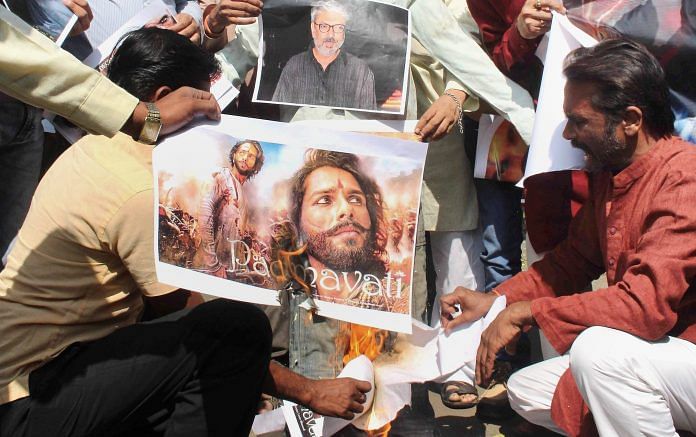The debate around the historical accuracy of fictional cinema like Sanjay Leela Bhansali’s upcoming film Padmavati raises critical questions, once again, about barring art for hurting ‘public sentiment’. Once approved by the censor board, must there be any other tests that movies need to pass? ThePrint asks a panel of experts:
Should concerns of a particular community come in the way of Padmavati’s release?
As a student of history, I will say history is always based on facts. If there is any deviation from those facts, then the movie must be banned. The love affair between Khilji and Padmini is a gross fallacy. Why would she have committed jauhar if there was any such relationship?
The conflict between Rana and Khilji must not be viewed in isolation. The power struggle between the Turks and the Rajputs began with Prithviraj Chauhan and Mohammad Gauri, the Battle of Tarain 1191 and 1192. The power struggle between the Delhi Sultanate and Rajputs continued till 1526. Khilji had a lust for power. This politically motivated the 1301 invasion of Ranthambore and 1303 invasion of Chittor. There are Persian inscriptions proving this in Chittor.
Khusro was a court poet and an eyewitness to the struggle. He has not mentioned any episode regarding Padmini. People believe if an eyewitness didn’t mention her, she didn’t exist. But then Khusro has also avoided so many other facts (like Khilji killed his uncle). A. L. Shrivastav, Ishwari Prasad and Dr G.N. Sharma (renowned historian of Mewar) have all mentioned Padmini and the conflict between Khilji and Ratan Singh.
Here are other sharp perspectives on the Padmavati controversy:
Shekhar Suman: film and television actor
Manvendra Singh: BJP MLA
Rana Safvi: author, ‘Tales from the Quran and Hadith’
Vijay Tiwari: spokesperson, Vishwa Hindu Parishad
Samarth Mahajan: creative director, Kahaani Wale
There is evidence that Padmini existed. Her palace and the place she committed jauhar exist. Those who claim she came into existence after Jayasi Padmavat are wrong. Local historical sources like Memsi also mention Padmini.
This movie attempts to romanticise jauhar. One mustn’t forget it doesn’t happen in a vacuum. It is accompanied by ‘saka’ (last offensive) where the men leave for a fight to the death. Women, thus, choose death over disgrace and dishonour.
The movie, I believe, has factual mistakes. They can actively become a part of historical narratives (like Jodha Akbar and Mughal-e-azam). If you make a period film, it is important to note, history doesn’t belong to only one community, it belongs to the people. Hence their sentiments must be valued.
R. S. Khangarot is a senior historian and Principal, Agrawal PG College Jaipur






